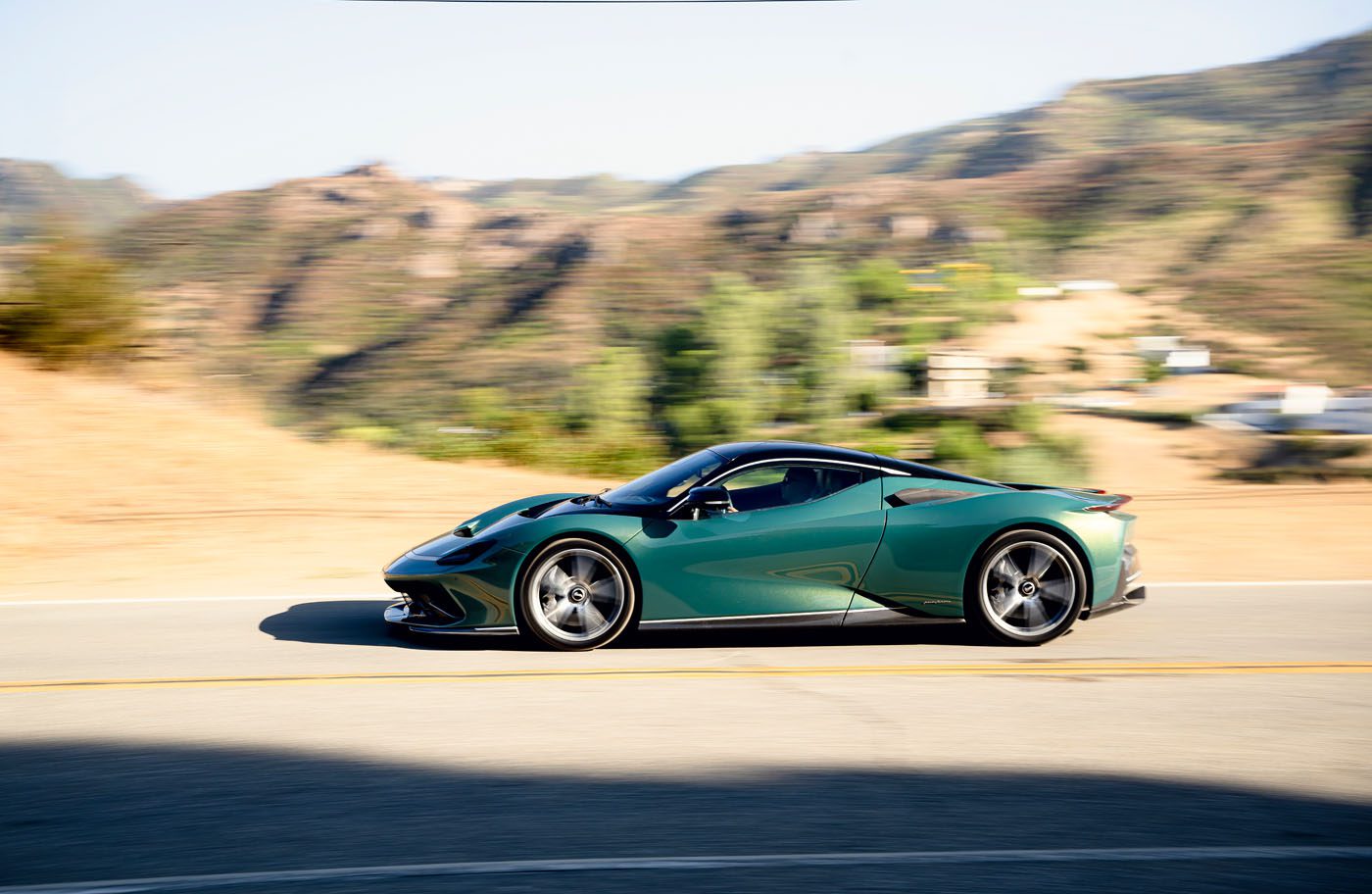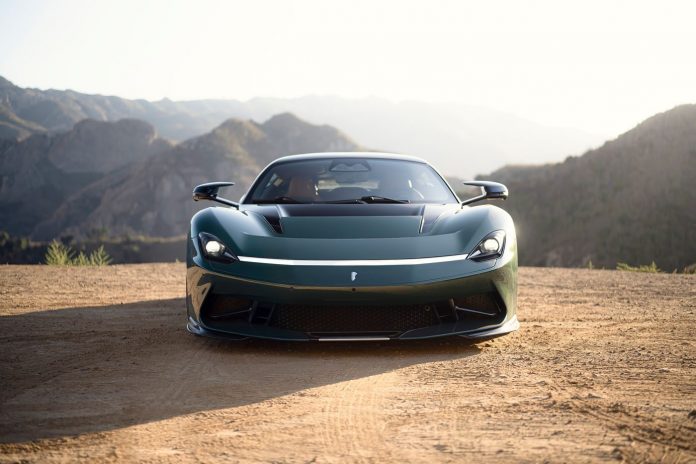Throughout its 92-year history, Italian design house Pininfarina has worked alongside brands such as Ferrari, Alfa Romeo, and Lancia to pen some of the world’s most influential designs. In 2018, the Turin-based company launched Automobili Pininfarina, formally stepping into the ring as a manufacturer of high-end electric vehicles. The Battista is the young subsidiary’s first production car, and it’s breaking into the hypercar space with outrageous performance stats, sleek looks, and a price tag to match.
(Images by James Lipman)
We recently went out to the canyons above Malibu for our first drive in the Battista and learned that Pininfarina calls it a “hyper GT.” In theory, this means a car that would be equally at home on a track or the open road. However, with nearly 1,900 horsepower on tap, enough luggage space for a pack of Hanes T-shirts, and a genuinely brain-melting driving experience, the Battista proved that it is significantly more “hyper” than “GT.”
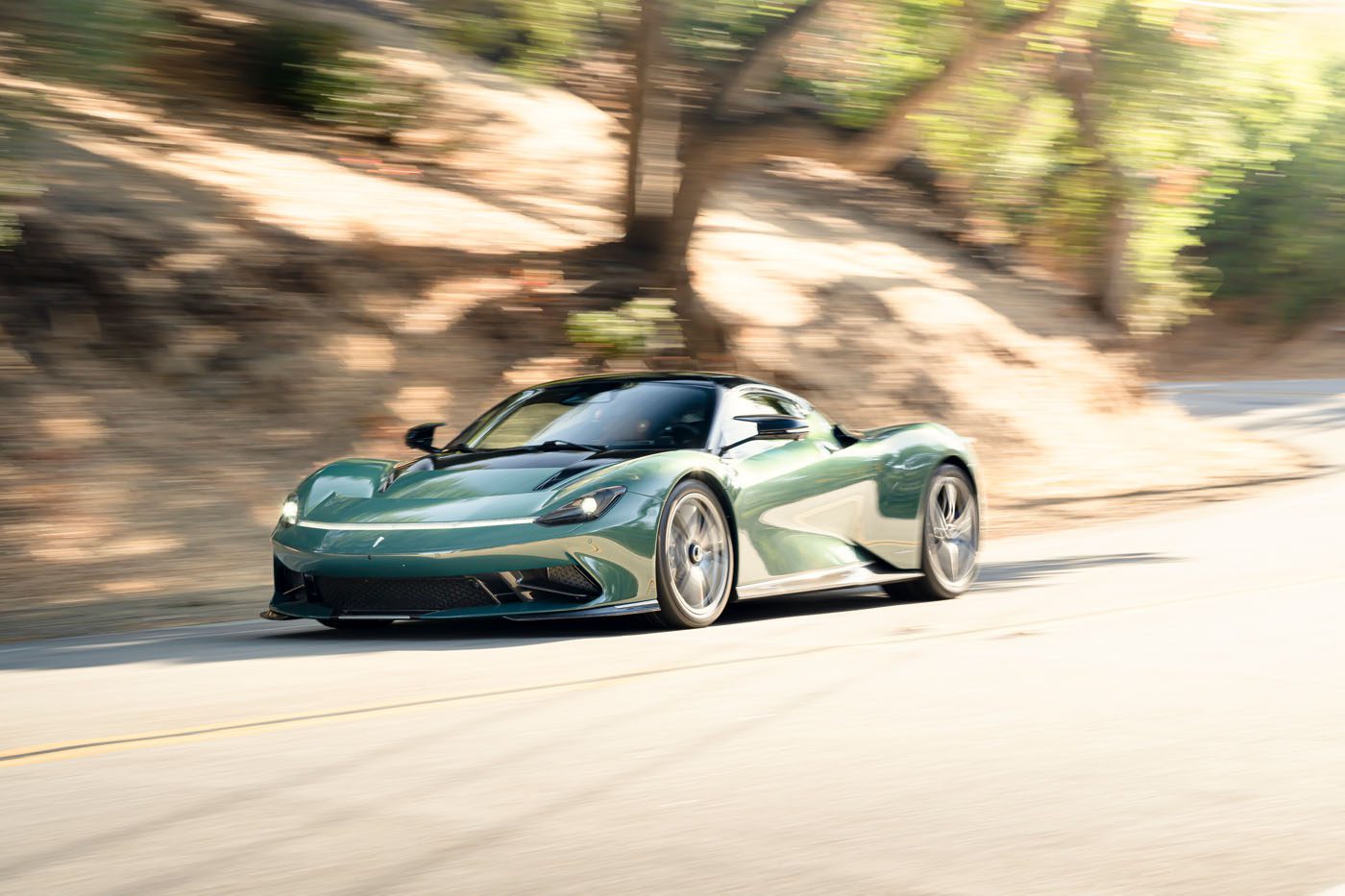
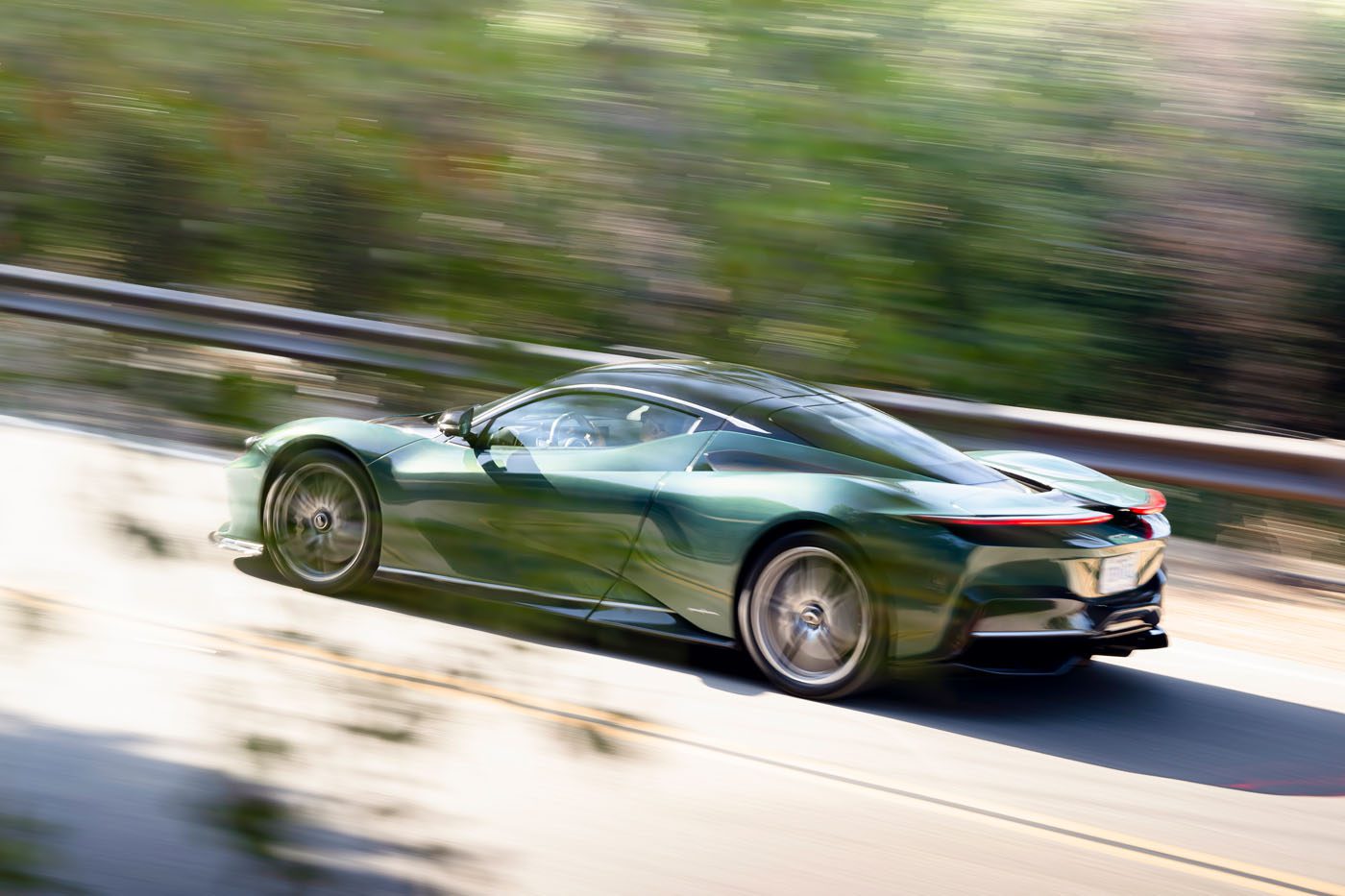
Despite counting on four electric motors for propulsion, the Pininfarina Battista looks like a “traditional” mid-engined car. It shares its architecture and electric powertrain with the Rimac Nevera, which has a 120-kWh “T” shaped battery pack, housing most of its weight behind the passenger compartment. However, the Battista doesn’t share a production line with its Croatian mechanical sibling. Instead, the Italian carmaker receives a rolling chassis and completes the assembly in Turin.
Stepping back to the outer skin, the Battista’s styling appears to draw inspiration from the design houses’ past work with Ferrari. It’s sleek, low, and substantially wide. Its main active aero element is a retractable rear wing that sits flush with the bodywork when not used. It also doubles as an air brake when necessary and changes as you move through the car’s drive modes.
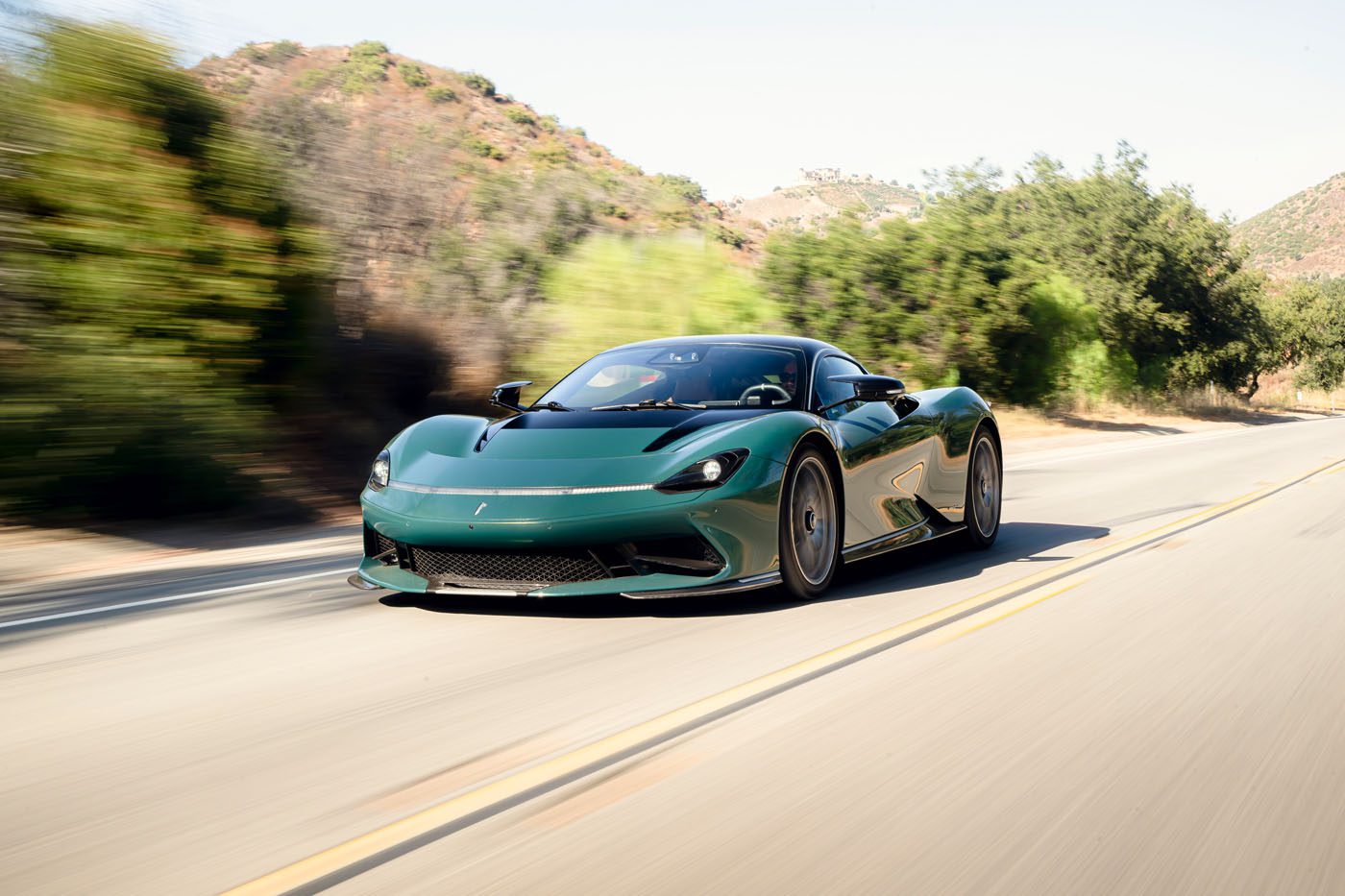
While there is a rear glass compartment to fit the available luggage set, cargo space remains at a premium. The trunk also blocks rear visibility, so you don’t get a rear window. Instead, the Battista relies on rear-facing cameras for visibility. Dimensionally, it’s about as long and wide as a Ferrari LaFerrari, so maneuvering it around tight spaces depending on cameras proved challenging.
There’s no denying that the Battista has the presence you’d expect from a hypercar. It takes one glance to know you’re dealing with something truly special. However, it impressed more due to its technical innovation rather than outright beauty.
Firing up the Battista proves more interesting than expected. In response to the lack of an idling engine note, Pininfarina opted to include a low-frequency hum. Its double purpose serves to warn pedestrians that the vehicle is on while adding to its overall mystique. If it sounds gimmicky on paper, we thought so too. However, it is a genuinely fun noise that leans on this car’s techy nature.
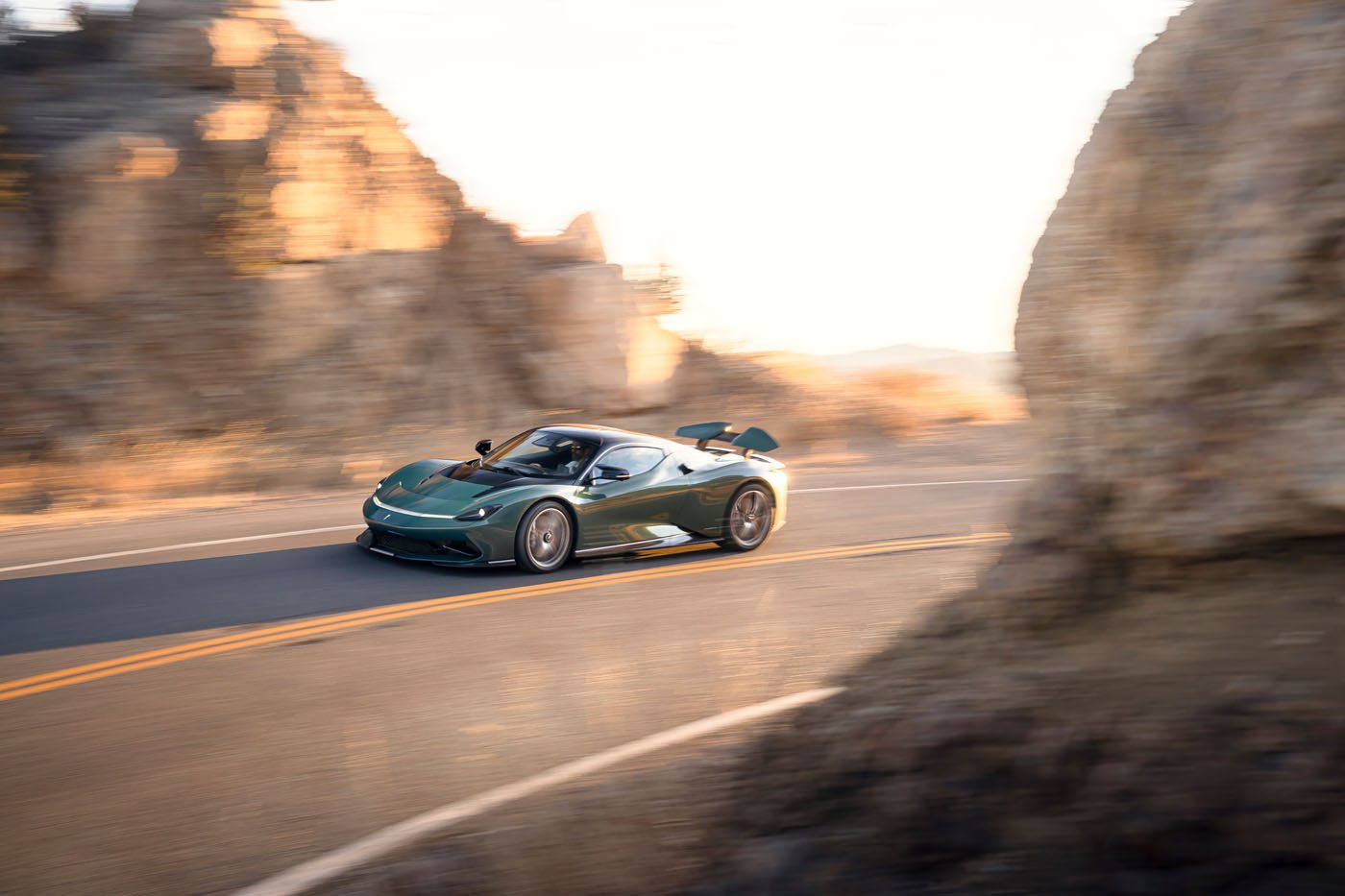
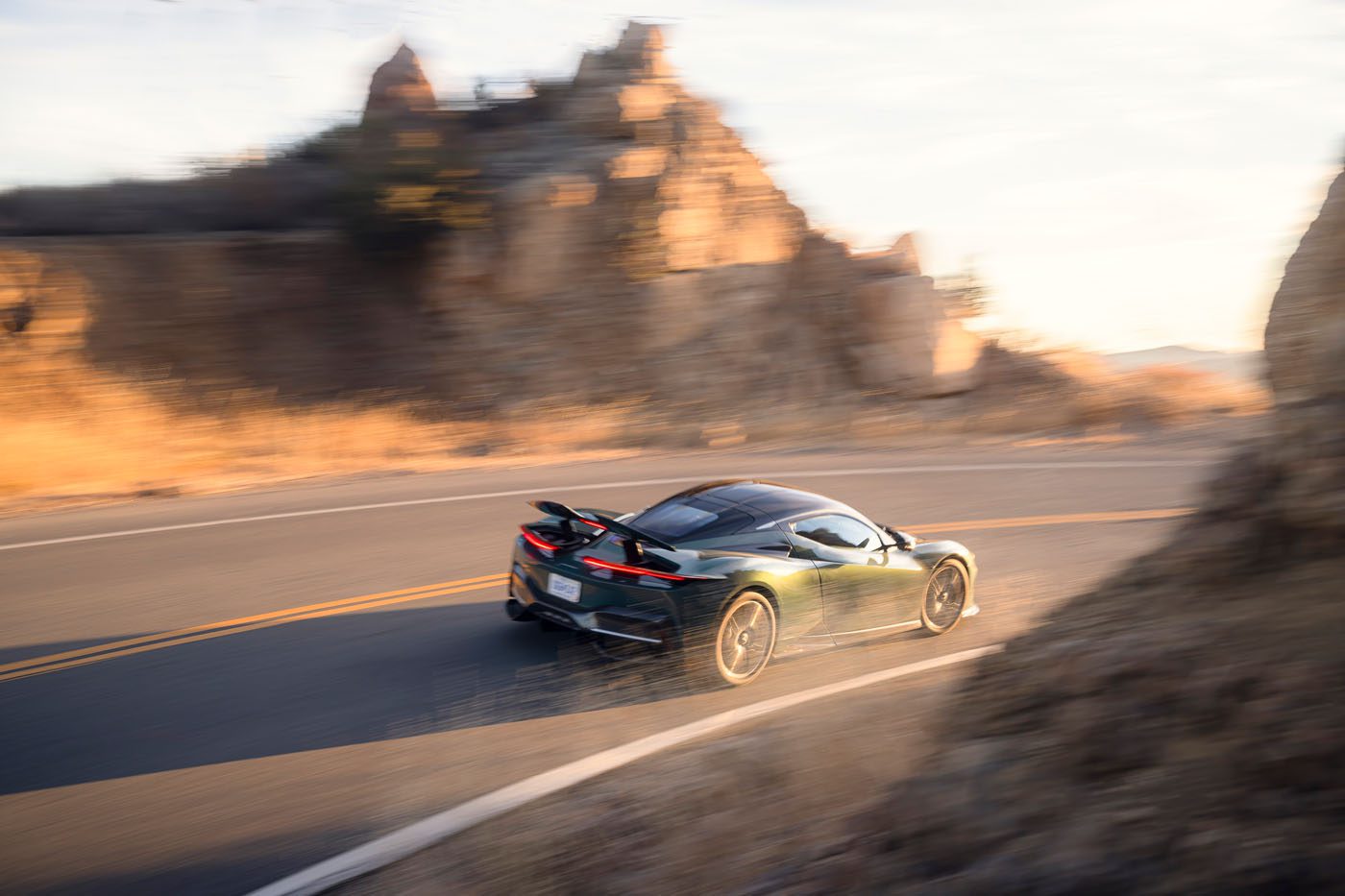
To the left of the steering wheel, you’ll find the car’s mode selector, which includes Carattere, Calma, Pura, Energica, and Furiosa. Carette serves as the car’s individual mode with selectable settings. Calma, which translates into “calm,” is the car’s most efficient mode while limiting power and retaining a softer suspension setup. Pura steps things up slightly but still limits power to around 1,000 HP. It also keeps the smooth suspension setup while delaying pedal response to improve around-town drivability. This is the “daily driver” mode, in which the Battista proved no more challenging to drive than any other EV.
Also Check Out: TheStradman’s Car Collection Is As Cool As It Gets
Stepping up to Energica boosts power up to around 1,400 HP while retaining all of your traction and stability control. Around the Malibu canyons, even this mode proved to be quite the handful. Pushing down the right pedal past 50 percent immediately pins your head to the seat and propels the car forward with incredible force. However, unlike most EVs that lose steam as you get up in speed, the Battista continues to build to seemingly no end.
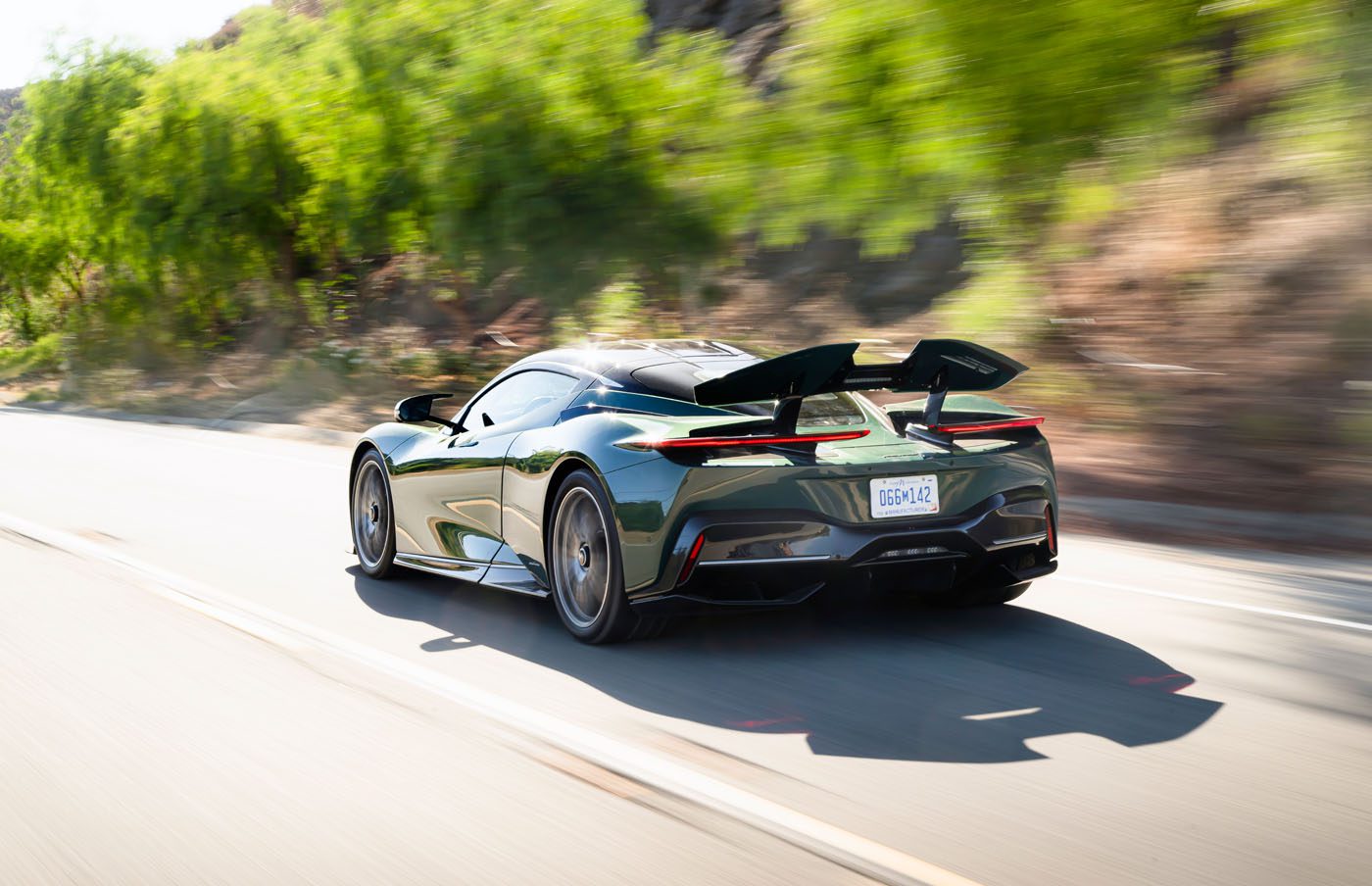
Despite already leaning on overwhelming, there’s still one mode to go, Furiosa. Meaning “furious,” this mode is aptly named as you get the full force of the Battista’s max 1,874 hp and 1,726 lb-ft output. Flat out, it’ll hit 60 mph in less than two seconds before continuing to a top speed of 217 mph. Accelerating in this mode feels like poking an angry bear with a stick. Give the go pedal too much input, and you’ll teleport to the next corner as all the road signs blur around you. This car is not for this world, it may be street legal, but almost no roads come to mind where you can even begin to test its limits.
If there was ever a poster child for “how much power is too much?” this is it. The Battista’s standard Michelin Pilot Sport Cup 2 tires work overtime to find traction as the car shimmies under hard acceleration. Its clever torque vectoring system does a stellar job of controlling the power sent to each wheel through the corners. It’s the only way that a substantial power figure is manageable in the real world.
Check Out More Automotive Reviews
While the Battista tips the scales at over 4,000 lb, it doesn’t feel so in the bends. That torque vectoring system does a great job of hiding the car’s overall weight while prioritizing grip. If that’s not enough, sticker Pilot Sport Cup 2 R tires are available for track use. In Furiosa, the car’s suspension also tightens up, allowing it to crush corners with excellent stability.
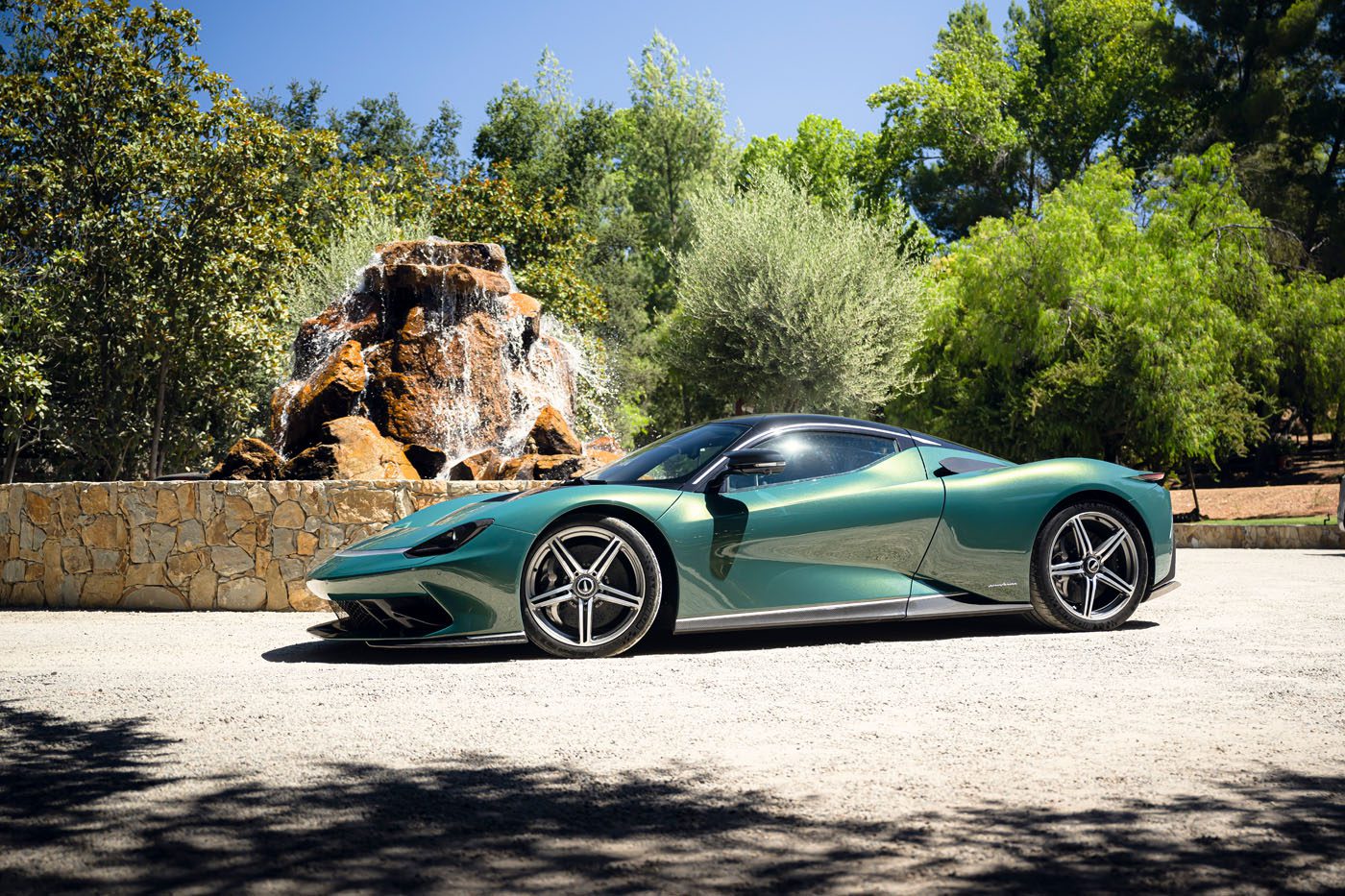
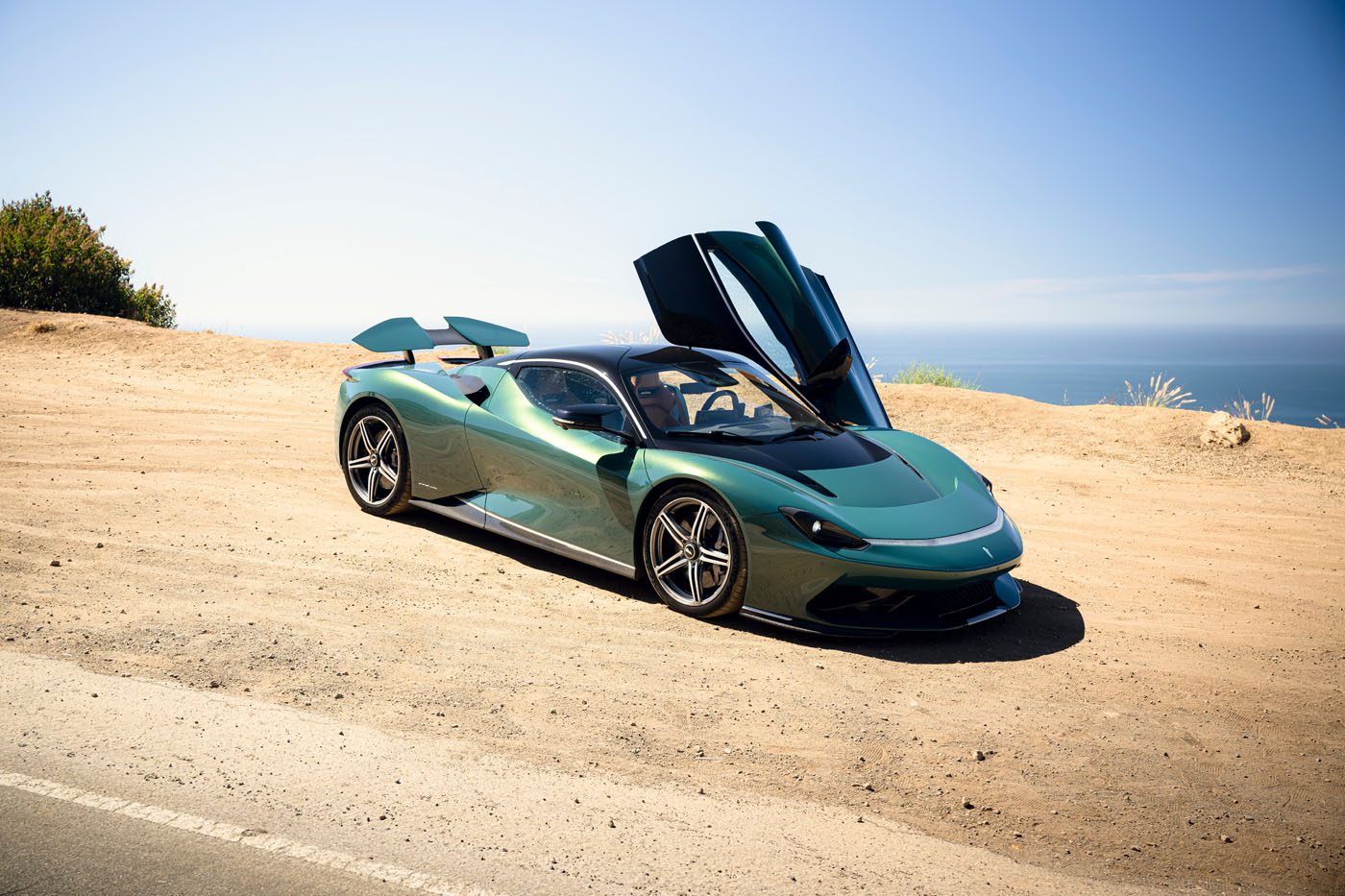
Steering feel is somewhat lacking. Although its weight increases as you move through the modes, it isn’t all that talkative, and you’ll hear the tires losing grip before you’ll feel them doing so. For us, the ideal drive mode would be comfort steering and suspension and the 1,400 HP power setting. It’s the point right before the car goes from thrilling to terrifying.
In terms of efficiency, the 120-kWh battery pack has an estimated range of around 300 miles. Unfortunately, our time with the Battista was short and insufficient for proper range testing. Still, we did score a few hours of quick driving without losing substantial amounts of charge, so we’re inclined to believe those estimates.
In keeping with Pininfarina’s claimed hyper GT status, the Battista’s cabin proved a roomy place to spend a few hours. There’s plenty of space to spread out and enough headroom so that even the tallest among us won’t feel claustrophobic. Unlike any hypercar we’d driven before, the Battista’s doesn’t feature virtually any buttons. Instead, you navigate the car’s settings by two screens that flank the driver on either side.
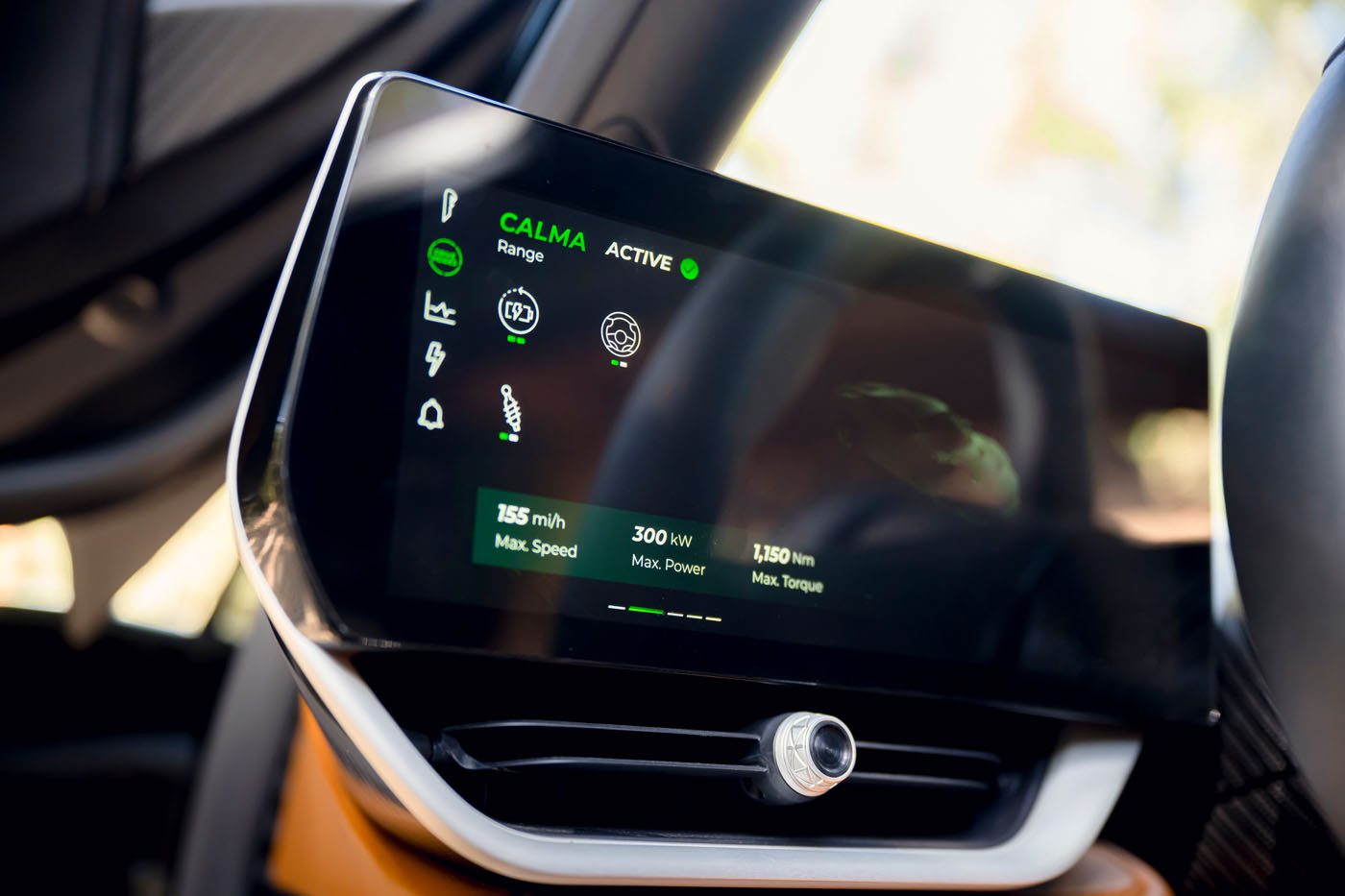
On the left screen, you have your vehicle settings, such as your climate controls, seat adjustment, steering wheel alignment, and any setting that previously required a physical button. The screen on the right is where your onboard infotainment system lives. It offers Apple CarPlay and Android Auto connectivity while housing a slick UI. Even during our short stint, the screens were intuitive to use and offered the benefit of cleaning up the cabin’s interior design.
The last screen sits directly in front of the driver and houses vital information such as your speed and state of charge. It’s small but visible through the steering wheel.
While its seats offered good bolstering for a drive in the canyons, they weren’t nearly as aggressive as a bucket seat. The chairs in the car we drove were comfortable enough for a good long road trip. There was support in all the right places while retaining generous padding. For the lucky 150 owners, the Battista will prove a car they don’t have to wait for a special occasion to drive. This could easily double as one of the world’s most expensive daily drivers.
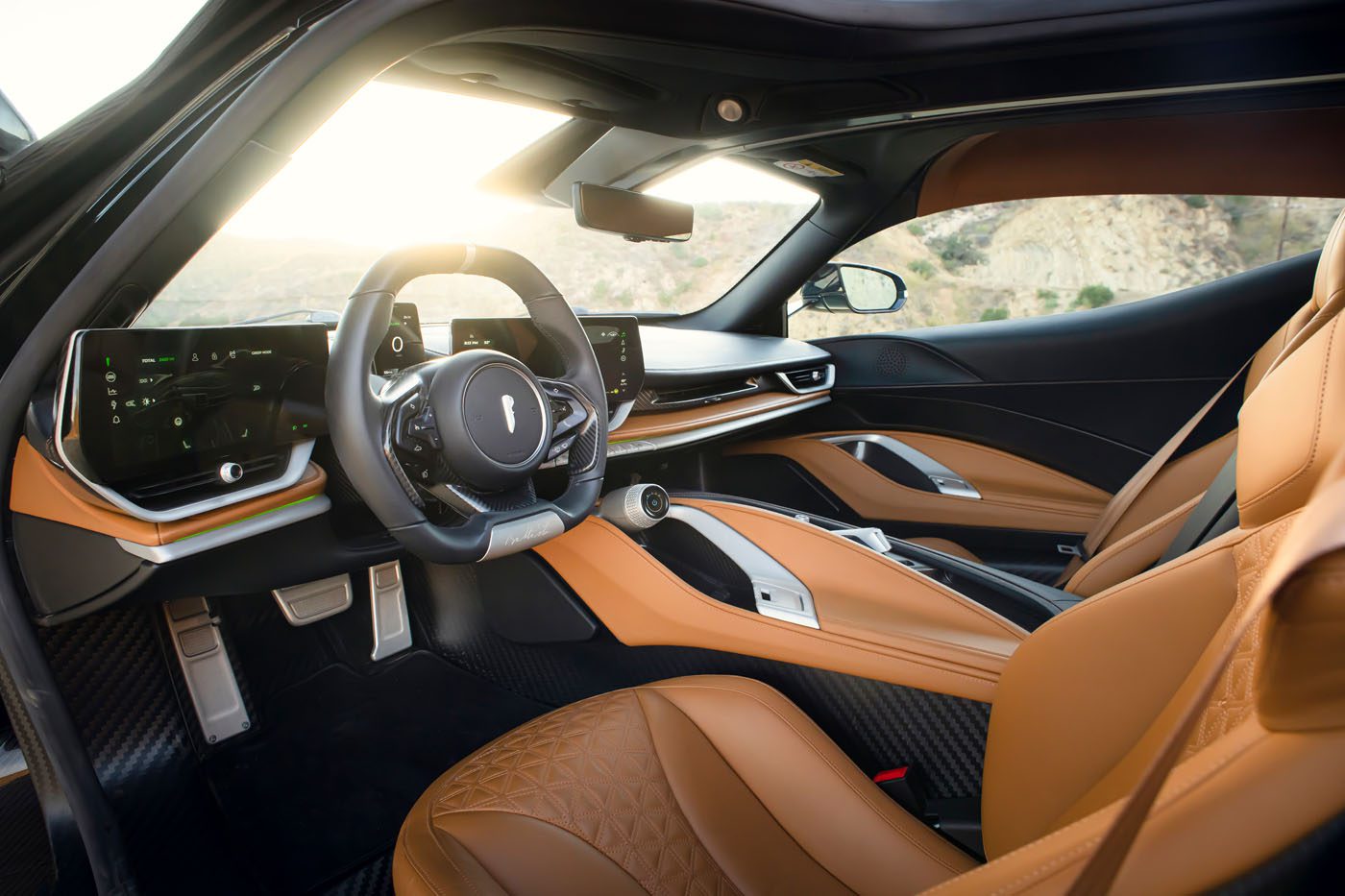
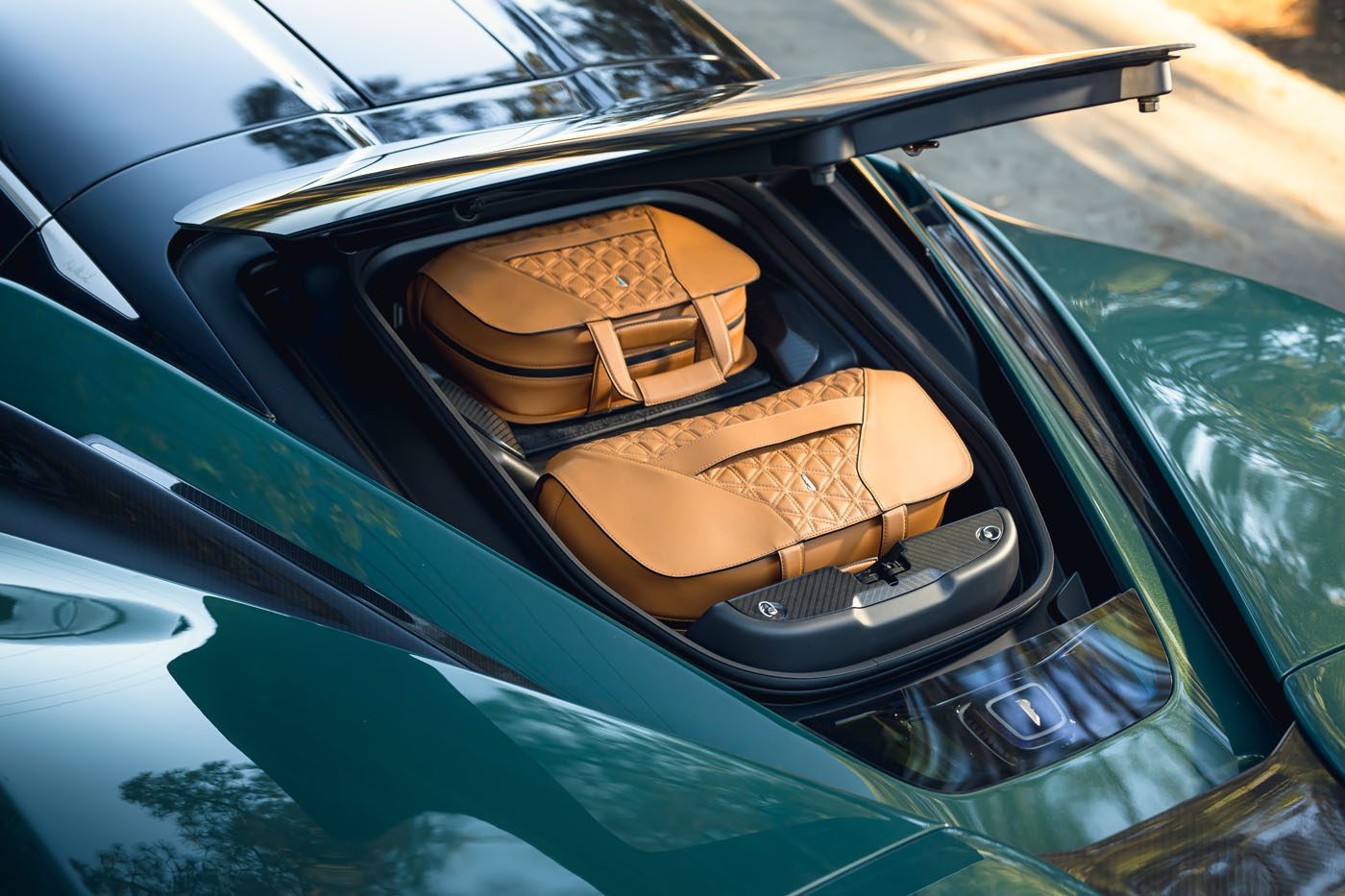
Aside from its limited production run, each Battista starts at $2.2 Million. However, the sky is the limit in terms of customization. From exposed carbon fiber with various hues to virtually any material available for the interior, the only limit to this hyper EV’s customizations are its customer’s wallet and imagination.
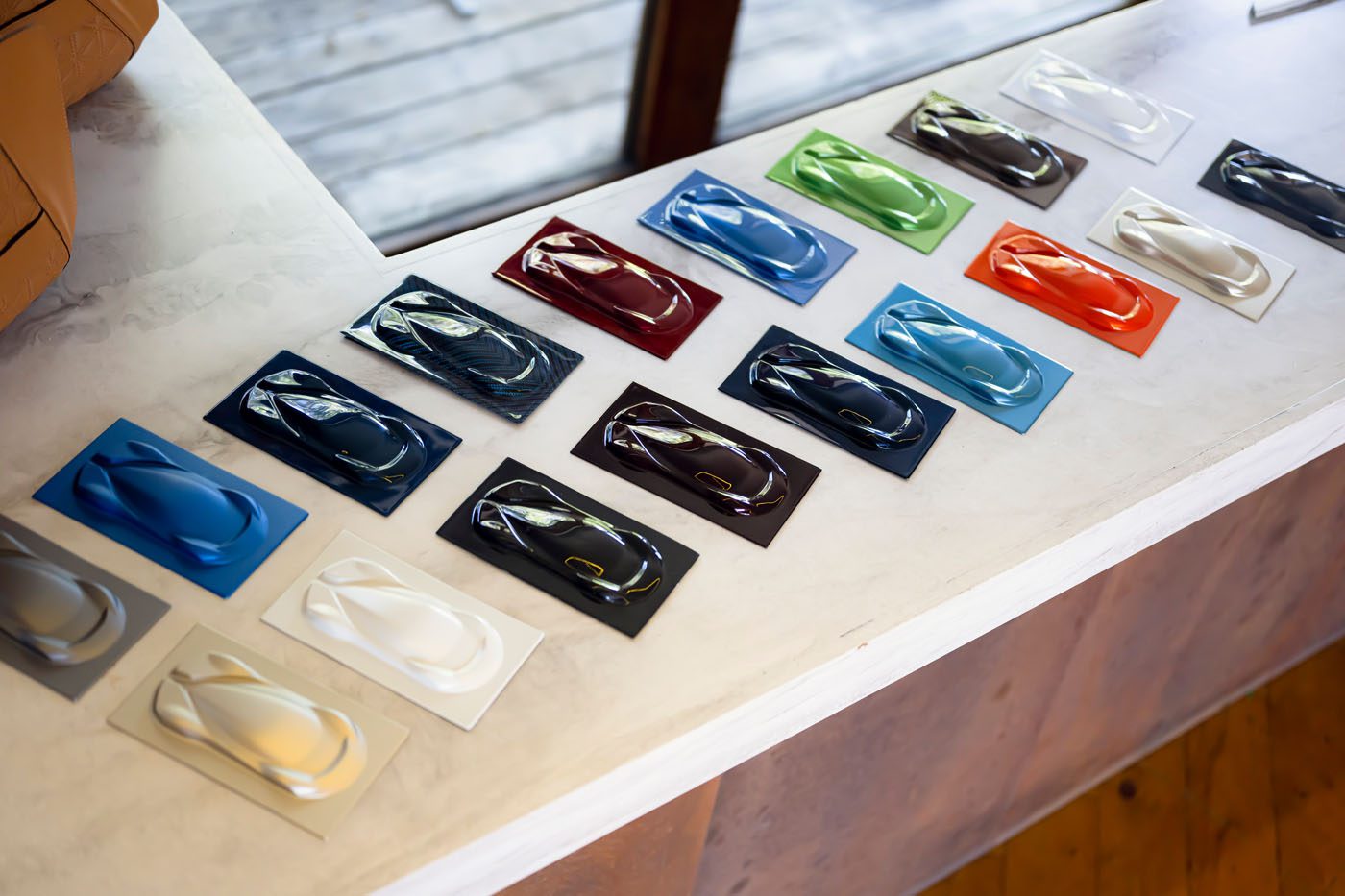
Following a few hours of driving through the Malibu canyons, it’s clear that the Battista is not just another hypercar. It and its mechanical sibling, the Rimac Nevera, redefine what we thought peak public-road speed could be. Anyone purchasing one of these cars should immediately sign up for a performance driving school to hone their skills. In its full-power Furiosa mode, this car can quickly overwhelm its driver with its instantaneous power delivery.
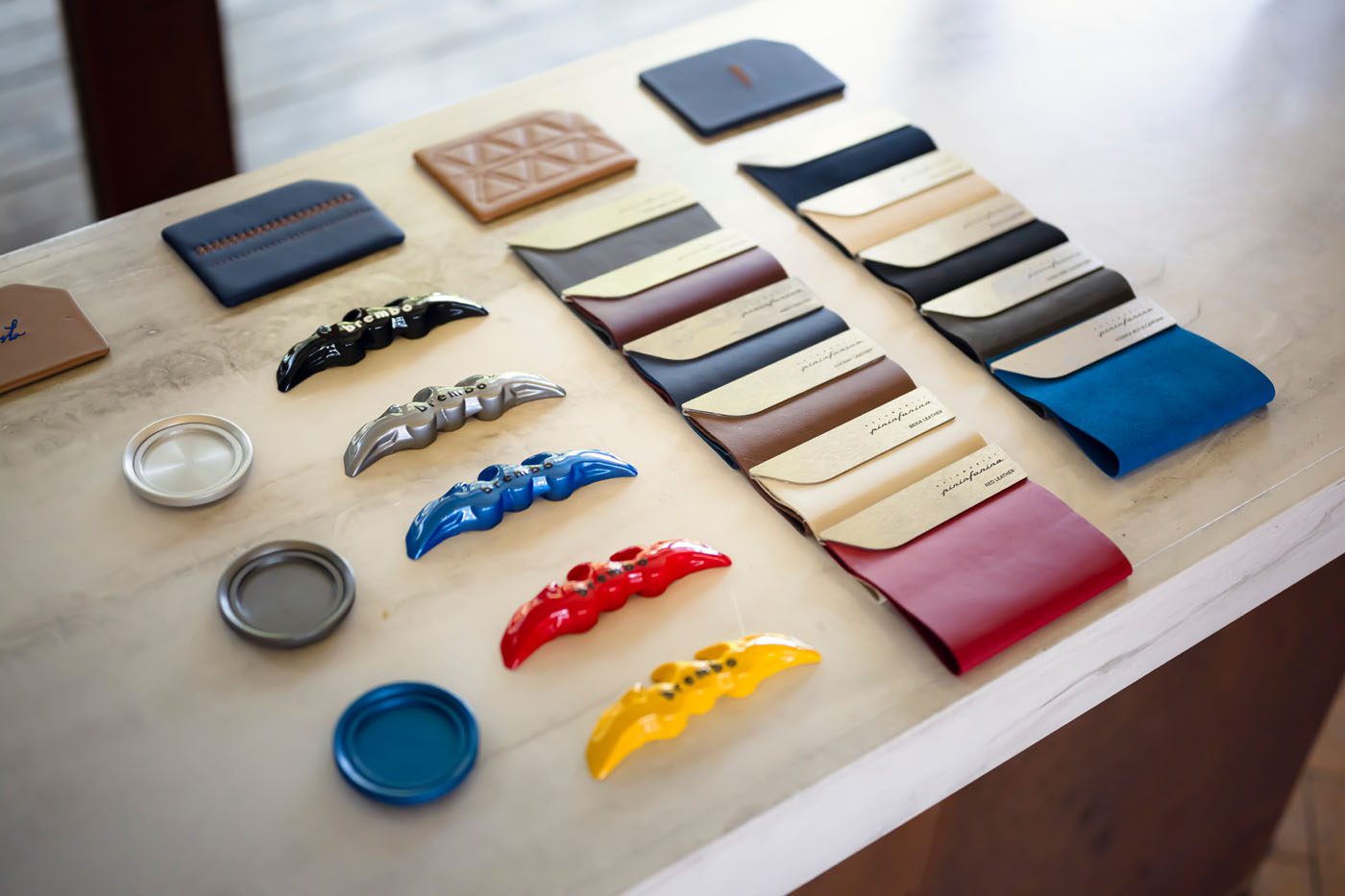
This car’s greatest strength is a double-edged sword. While its brutal acceleration is intoxicating and shoots your heart rate to the moon, it gets to a point where its driver is managing the car more than outright enjoying it. The Battista is a wolf in wolf’s clothing and a proper hypercar. However, while it may be more “hyper” than “GT,” there are remnants of the latter. Slow things down, set the suspension in its softest setting, and you can settle in for a comfortable ride in a massive technological achievement that gives us a glimpse of what the future holds for the world’s quickest and most expensive machines.
